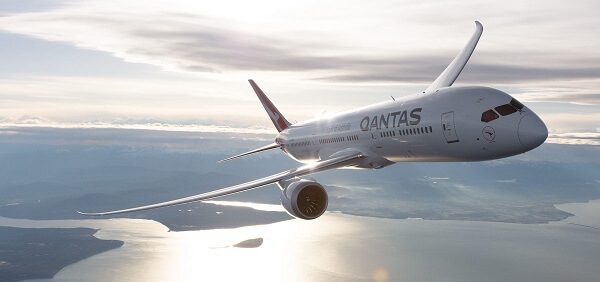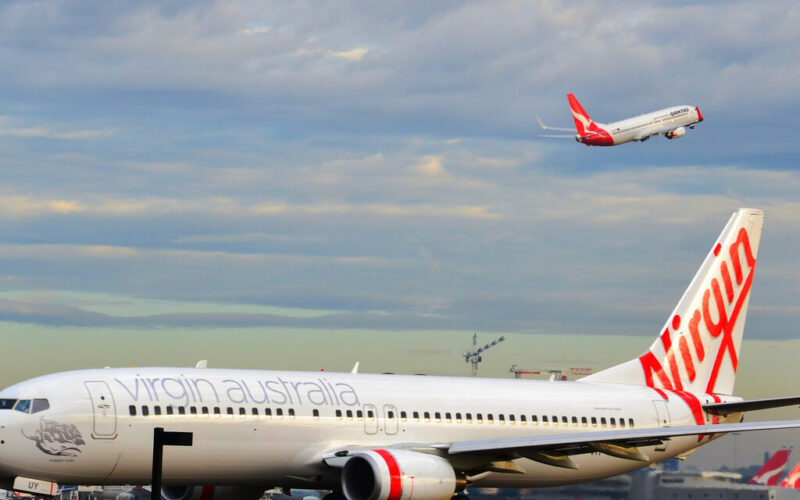Qantas has recently sought regulatory approval for a proposed variation that would allow the airline and its OneWorld alliance partner Cathay Pacific to codeshare on each other’s services between Australia and Hong Kong. But the move is facing opposition from one player in the field: Virgin Australia. The airline fears that if Qantas and Cathay are allowed to expand their codesharing deal, it would lead to concentration of market power by the two carriers, which already dominate the Hong Kong route.
Fueled by strong demand for travel between Australia and Asia, the competition over flights to Hong Kong has been heating up at home between the flag carrier Qantas and Virgin’s (VAH) Australian brand for a while now.
Qantas, together with Cathay Pacific, the flagship carrier of Hong Kong, announced their codeshare agreement back in September 2018, raising the bar for the two airlines, but particularly for Qantas, which would now be able to extend its reach over the broader Asia region.
The deal, which came into effect the following month, applied to a total of 25 routes across Asia-Pacific. It allowed the Australian airline to sell tickets on Cathay Pacific and its subsidiary Cathay Dragon’s flights to 10 cities across India, Sri Lanka, Myanmar, and Vietnam connecting through Hong Kong. In turn, Cathay was now able to codeshare on 13 domestic Qantas routes.
Most importantly, the agreement would see Qantas codesharing on Cathay Pacific’s long-haul services from Hong Kong to two cities in Australia, Perth and Cairns. Qantas currently flies to Hong Kong from Brisbane, Melbourne and Sydney – all routes that its partner Cathay also flies.
And guess, which other airline flies between Australia and Hong Kong? Virgin Australia. The carrier has a broad network of destinations in Asia-Pacific, including direct flights to Hong Kong from the very same gateways of Melbourne and Sydney.
Race for the “most valuable” market
Virgin Australia has been following a similar path as Qantas when it comes to growth plans, having its sights set on expansion into Greater China. No wonder, as China has been identified the fastest growing and most valuable Australian inbound market, according to Tourism Australia’s Greater China Country Profile.
“Until today, this route has been far too cozy with just two airlines flying it and it desperately needed Virgin (VAH) competition, so we’re here today to shake things up on this route,” Sir Richard Branson said on the inaugural Melbourne-Hong Kong flight in July 2017, supposedly taking a jab at the two rival carriers and their duopoly on the Australia-Hong Kong route.
.jpg)
Virgin Australia operates daily services between Australia and Hong Kong utilizing its Airbus A330-200 fleet (Aero Icarus, CC BY-SA 2.0)
Come February 2018, and Virgin (VAH) announces its daily Sydney-Hong Kong service. “Greater China is a key pillar of our strategy and the addition of Sydney services to our already popular Melbourne flights to Hong Kong strengthens our proposition immensely,” Virgin Australia Group Executive Rob Sharp has said launching ticket sales on the route.
Virgin Australia cries wolf
Seems like instead of “shaking things up”, Virgin Australia was shaken itself by Qantas and Cathay plans. On January 8, 2019, Qantas submitted an application for a variation regarding its Hong Kong route with Australia’s International Air Services Commission (IASC), the government body which allocates international airline capacity.
In the application, it was proposed that as part of a recently signed codeshare deal between Qantas and Cathay, the latter would “offer codeshare services on flights operated by Qantas on the Hong Kong route from 31 March 2019”.
Two weeks later, Virgin (VAH) responded with a warning. In its a letter to the IASC, the carrier expressed “significant concerns” on the proposed variation, stating fears it would lead to “an unnecessary expansion of both Qantas and Cathay Pacific’s market power, to the detriment of the travelling public”.
“Any strengthening of the cooperation with Cathay Pacific is likely to increase the market power that the two carriers individually and collectively hold on the Hong Kong route,” the airline stresses in its submission to the IASC on January 22, 2019.

Qantas’ flights from Australia to Hong Kong are served by the airline’s Boeing 787-9 Dreamliners (Qantas)
Since Virgin (VAH) launched its own Australia-Hong Kong service, the carrier has boasted it brings “choice and competition” on the route. “Shaking-up” this market largely meant introducing lower fares: since it began flying to Hong Kong, fares from Australia have dropped by up to 40%, the airline states. Its main argument brought to the IASC is that the expansion of the deal between its rivals would not only hurt competition, but also the passengers, as airfares would likely rise.
“This [deal] would inevitably diminish the competitive forces in the market and may lead to higher airfares and reduced choices for customers, with corresponding implications for Australian tourism and trade,” Virgin Australia’s submission to the agency insists.
Qantas and Cathay Pacific: not loosening grip on the market
According to Virgin (VAH) , Qantas and Cathay Pacific currently dominate the Hong Kong route: in the year ending October 2018, both airlines recorded passenger load factors above 80% and together carried 92% of all passengers travelling between Australia and Hong Kong.
During the same time period, Virgin Australia together with its partner Hong Kong Airlines carried the balance of passengers on the route, recording passenger load factors of only 66% and 61% respectively, the airline points out.
In fact, according to Australian Aviation, Cathay uses all available capacity to Brisbane, Melbourne, Perth and Sydney, entitled to Hong Kong carriers by the current bilateral air services agreement between the two countries.
The situation would explain why, in October 2018, Hong Kong Airlines withdrew from the route, leaving Virgin Australia as the only other competitor in the market.
As expected, Qantas has defended the codeshare deal. “Our codeshare with Cathay Pacific has delivered great benefits for our customers since we launched in October last year,” a spokesman for the airline was quoted as saying by Airliner Ratings.
“We’re now looking to expand the codeshare further to create more options for travelers and will continue to engage with the IASC process over coming weeks”.

